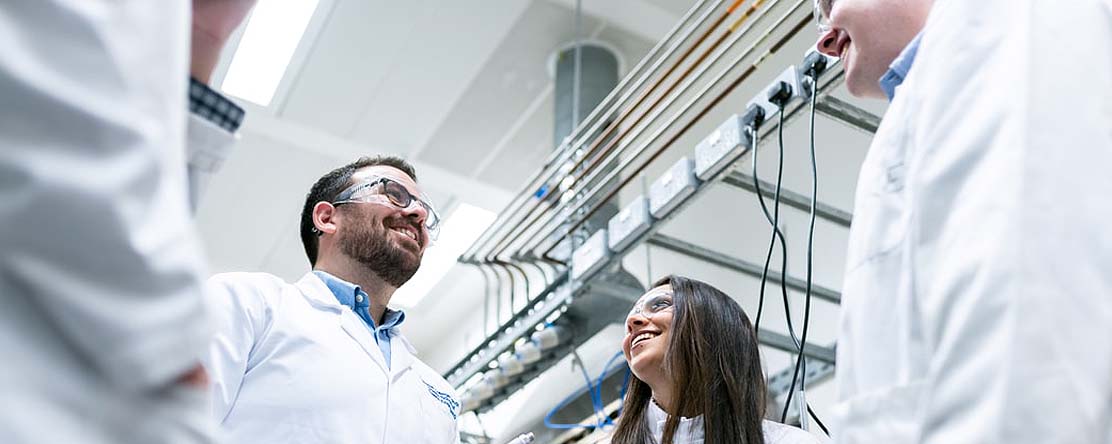
In the News
Learn Before You Leap: The Catalytic Power of a Learning Network
-
Focus Areas
Capacity Building & Leadership -
Programs
CAMI Health

Why learning networks are one of the most effective ways to accelerate learning and strengthen coordination across the social sector.
Learning networks are a form of collaboration that enables groups of stakeholders to cultivate connections across communities and organizations, and to strengthen a whole system simply by focusing on the potential for participants to share information and learn from one another. And while new collaborative action is not the primary goal of a learning network, action is often a byproduct of the deeper connections and shared learning that result. In this way, building a robust learning network can itself serve as an effective strategy for creating change.
Our work with a number of learning networks over the past few years has revealed that the most effective learning networks share a few important traits:
- They have dedicated network coordination to support the network as a whole.
- They actively gather information from the field.
- They help disseminate information out to the field.
- They enable information to flow across the field.
To illustrate the critical role each of these activities plays in a learning network’s success, we’ll use the work of the Initiative for Multipurpose Prevention Technologies (IMPT), a global learning network focused on reproductive health, as an example.
Forming the IMPT learning network
The IMPT comprises researchers, product developers, scientists, policymakers, advocates, and funders who aim to advance sexual and reproductive health for women and girls worldwide through the development of multipurpose prevention technologies, or MPTs. MPTs are an innovative class of products that deliver varied combinations of contraception, HIV prevention, and prevention of other sexually transmitted infections.
Though there was talk of “broad spectrum” prevention, there was no cohesive field of work focused on the development of MPTs prior to the network’s formation in 2009. Rather, work in sexual and reproductive health prevention was fragmented. Some organizations and institutions knew and interacted with each other, but overall the field of sexual and reproductive health prevention researchers, funders, and advocates lacked coordination with no central hub to connect it.
To address this need, CAMI Health, a nonprofit organization founded in the early 2000s by Bethany Young Holt, convened stakeholders working on HIV prevention, STI prevention, and contraceptive development in 2009. As Holt described the field at that time, “MPTs were a budding idea gaining some conversational interest, particularly in the microbicide and family planning fields, but there was no organizing body poised to move MPTs from a concept to a reality. As a result of the 2009 meeting, the MPT field launched in tandem with the IMPT network—an organizing body to help facilitate the progress of the MPT field.”
In terms of network evolution, the formation of the IMPT enabled the MPT field to evolve along the lines illustrated below. Within a few years, the IMPT network had evolved into a multi-hub network, and it now resembles a core/periphery network due to CAMI Health’s efforts to engage additional actors. Today, the IMPT has roughly 100 active participants, and more than 1,000 other individuals receive its communications.
Nearly a decade after the network’s founding, there are nearly two-dozen MPT products in development, and MPTs have become widely recognized as a new class of comprehensive prevention products in sexual and reproductive health.
By convening individuals and organizations from across the field for the first time, CAMI Health enabled network members to learn about and connect with one another in ways that were not previously possible. The MPT field could never have advanced this far, or this fast, without the catalytic role of the IMPT and the active role that CAMI Health has played as the network’s secretariat to coordinate activities in the field.
The essential role of network coordination
The role that CAMI Health plays in the IMPT is what we call “network coordination”—the first essential trait of effective learning networks. Network coordinators are the architects and builders of collaborative efforts. Those who perform these roles have been called systems leaders, systems entrepreneurs, network leaders, network entrepreneurs, strategic conveners, and accompagnateurs. Whatever they are called, their primary role is to coordinate a constellation of people, resources, and skills to achieve a shared vision and address complex challenges.
We have found it useful to think of network coordination as having responsibilities in three major areas:
- Front of the house: external communications, public relations and outreach, and resourcing
- Middle of the house: network weaving, process design, meeting facilitation, and member on-boarding
- Back of the house: network operations, financial planning, and maintaining the network’s technological infrastructure
Without skilled coordination, networks are unlikely to move beyond the formation stage. Although many function without dedicated coordinators, these networks, according to research from Tom Wolff, “have difficulty taking on multiple issues, keeping participants engaged, completing essential tasks, and producing results” compared to staffed networks.
Organization as network coordinator
Nonprofit organizations like CAMI Health are often particularly well-suited to catalyzing and coordinating learning networks, because they have the staffing, systems, and funding to resource the network, the legal status needed to act as its fiscal agent, and office space in which coordinators can work. Furthermore, nonprofits are well positioned to catalyze learning networks in the first place, because they have a deep understanding of what’s happening in their field, and can recognize the need for greater coordination across it. This model of organization-as-network-coordinator may be the most promising and sustainable approach to forming and supporting networks, especially since the process can also serve as an effective strategy for fulfilling an organization’s mission.
An example of this is the Partnership for Children and Youth (PCY), a nonprofit organization based in Oakland, California. PCY advances its mission “to support schools and their partners so every child can thrive” in part by coordinating five distinct networks, each focused on a different region or issue related to its overall mission. Another example is the Fire Adapted Communities Learning Network, which is staffed primarily by The Watershed Center, in partnership with The Nature Conservancy. The network is in effect a program of The Watershed Center that fulfills an essential part of its mission to “develop innovative approaches to natural resource management, economic development, and community resilience.”
Fulfilling the role of organization-as-network-coordinator is artful, however, and comes with its own set of challenges—most of all, the need to support the network without restricting or controlling its path. To do otherwise runs the risk of stifling the very energy that gives a network its potential for impact. In addition, as Frances Dunn Butterfoss writes, organizations are often tested by the need to “maintain a neutral position that presents an unbiased view of the issues, facilitates decision making, and supports participants’ priorities, not necessarily their own.” Finally, if an organization seeks public attention as the network’s coordinator, it runs the risk, as Nick Martlew of Crisis Action writes, of undermining “the trust that your partners put in you; they will question whether you are organizing for impact or for ego.”
How learning networks work
There are countless examples of learning networks around the globe, though many use different terms to describe themselves, including communities of practice or associations. Yet, regardless of their differences in size, purpose, and geography, all of the most effective learning networks do three things well:
- The take in information from the field.
- They get information out to the field.
- They enable information to flow across the field.
1. Information in: To gather information from the field, learning networks must stay connected with participants, have a clear process to ask for and collect information, and have a functional technological infrastructure to organize, archive, and deliver the information back to the field.
To this end, the IMPT serves as an information hub for the MPT field. The network considers its online resource center the primary destination for any and all MPT-related information, including articles, presentations, events, funding opportunities, and other information. The IMPT actively curates these resources to make sure they are up to date and accurate. CAMI Health staff also attend conferences, subscribe to listserv groups and alerts such as Google Scholar, and track all MPT products in development, as well as investments in the MPT field.
2. Information out: Learning networks get information out to the field through webinars, calls, newsletters, learning opportunities, and other means of distribution. By aligning messaging from across the field, learning networks help fields build a sense of shared purpose and identity.
To distribute accurate and relevant information to the MPT field, the IMPT sends out a monthly e-blast, hosts regular webinars, presents at conferences, and provides opportunities for participants to present their work and answer questions.
3. Information across: Collecting and disseminating information is a valuable service, but it is not sufficient. Learning networks must also help stakeholders connect with each other directly so that information can flow freely, unrestrained from the bottleneck of a central hub. By actively weaving connections across the network and providing mechanisms for network members to connect with one another, learning networks can foster self-organization, support members to coordinate the activities they’re working on, and avoid duplication of efforts.
The IMPT helps information to flow across the network by:
- Deliberately weaving connections—facilitating connections between people and organizations working on complimentary research or product development
- Organizing in-person convenings, ranging in size from small workshops to large conferences and symposiums
- Coordinating a collaborative group of funders, called the Supporting Agency Collaboration Committee, to prioritize funding needs, and fill funding gaps
Continue reading the full article in the Stanford Social Innovation Review.
Originally published by Stanford Social Innovation Review
More Updates
Work With Us
You change the world. We do the rest. Explore fiscal sponsorship at PHI.
Support Us
Together, we can accelerate our response to public health’s most critical issues.
Find Employment
Begin your career at the Public Health Institute.




